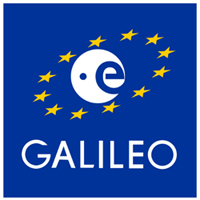 Pen Enge
Pen EngeStanford University professor and GNSS expert Per Enge has been named chief technical advisor of Polaris Wireless, a Mountain View, California–based provider of software-based wireless positioning.
According to Polaris Wireless, Enge, director of Stanford’s GPS Research Laboratory, will leverage his experience in technology and academic fields “to provide strategic guidance regarding location technology, intellectual property, and research partnerships with universities and other technology vendors.” He will report to the company’s CEO, Manlio Allegra.
Stanford University professor and GNSS expert Per Enge has been named chief technical advisor of Polaris Wireless, a Mountain View, California–based provider of software-based wireless positioning.
According to Polaris Wireless, Enge, director of Stanford’s GPS Research Laboratory, will leverage his experience in technology and academic fields “to provide strategic guidance regarding location technology, intellectual property, and research partnerships with universities and other technology vendors.” He will report to the company’s CEO, Manlio Allegra.
Enge, a member of Inside GNSS’s Editorial Advisory Council who has served as a consultant to Polaris Wireless for several years, says that his priorities will include optimizing the R&D teams within the company while also attracting talent from among recent graduates of academic engineering programs.
Founded in 1999, Polaris Wireless has about 120 full- and part-time employees working on developing and implementing its proprietary Wireless Location Signatures (WLS) technology.
Designed to enable positioning indoors and other environments in which GNSS and assisted-GNSS techniques perform poorly, WLS uses a pattern-matching technique that exploits the reporting structure inherent in all wireless air interfaces. This includes such measurements as signal strength or signal-to-interference ratios built into reporting protocols in call processing messages used by wireless networks to make handover decisions.
These measurements comprise an RF “signature” that can be mapped, in Polaris Wireless’s case, into a Predicted Signature Database (PSD).
As a mobile phone measures signal strengths and time delays from nearby cells, it compiles a list of these measurements and reports them back tothe serving base station. Polaris Wireless’s technology correlates these measurements against a database of radio environment maps in whichthe best match indicates the most likely position of the handset.
The technique provides a two-dimensional position accuracy of about 50 meters (for 67 percent of fixes) in urban environments where the wireless network infrastructure is densest, according to the company. That accuracy is designed to meet the Federal Communication Commission’s E911 Phase II mandate for reporting the location of emergency callers using mobile devices.
Polaris Wireless hopes that it will also attract location-based service (LBS) providers to its technology.
WLS doesn’t require installation of additional hardware or software user equipment. Instead, location engine software is installed at a Polaris Serving Mobile Location Center connected to a customer’s network.
Together with the PSD Toolkit, the WLS can produce a position fix within about five seconds in an urban area, according to the company.
Polaris Wireless is working on technical enhancements that would provide a vertical component to the WLS-generated position, according to Michael Doherty, the company’s director of product marketing and communications. That capability will be particularly important for locating E911 callers inside tall buildings.
The Silicon Valley company says that it achieved record sales and revenue results during 2011, including multi-million-dollar deployments of its Altus and OmniLocate location surveillance product suite. Polaris Wireless says it now has among its customers more than 20 U.S. wireless carriers, six managed service partners, and 14 international deployments.
Enge is co-author along with Pratap Misra of the textbook, Global Positioning System: Signals, Measurements, and Performance, and has received the Kepler, Thurlow, and Burka Awards from the Institute of Navigation (ION) for his work. He is a member of the National Academy of Engineering as well as a fellow of both the ION and the Institute of Electrical and Electronics Engineers (IEEE).




